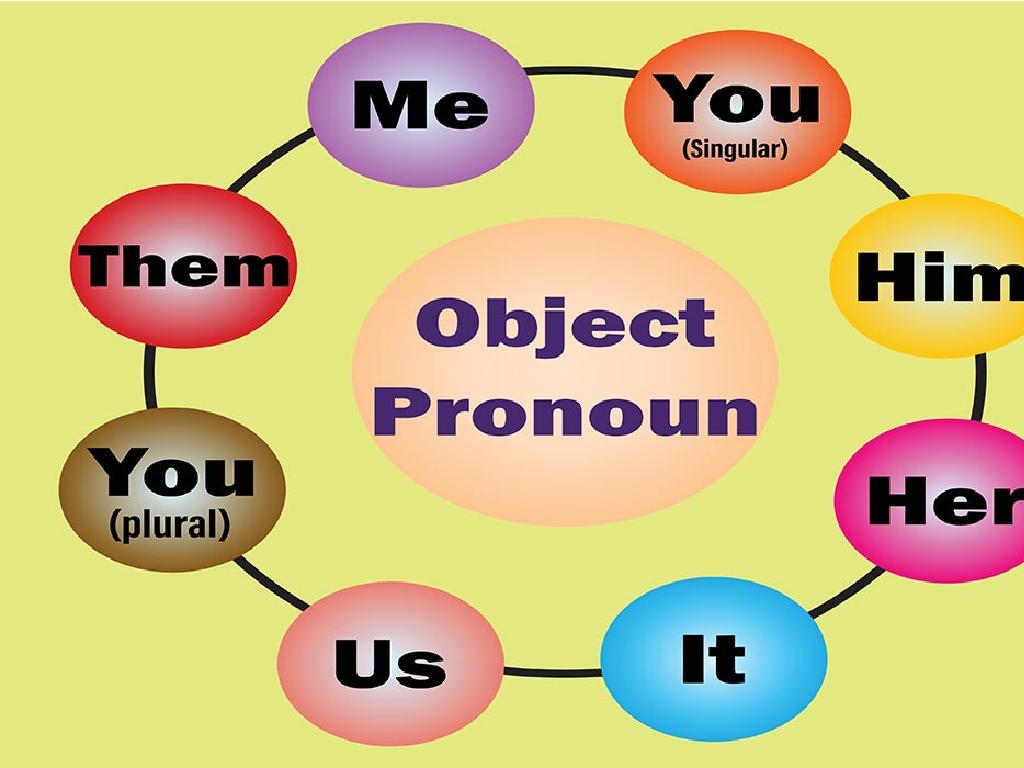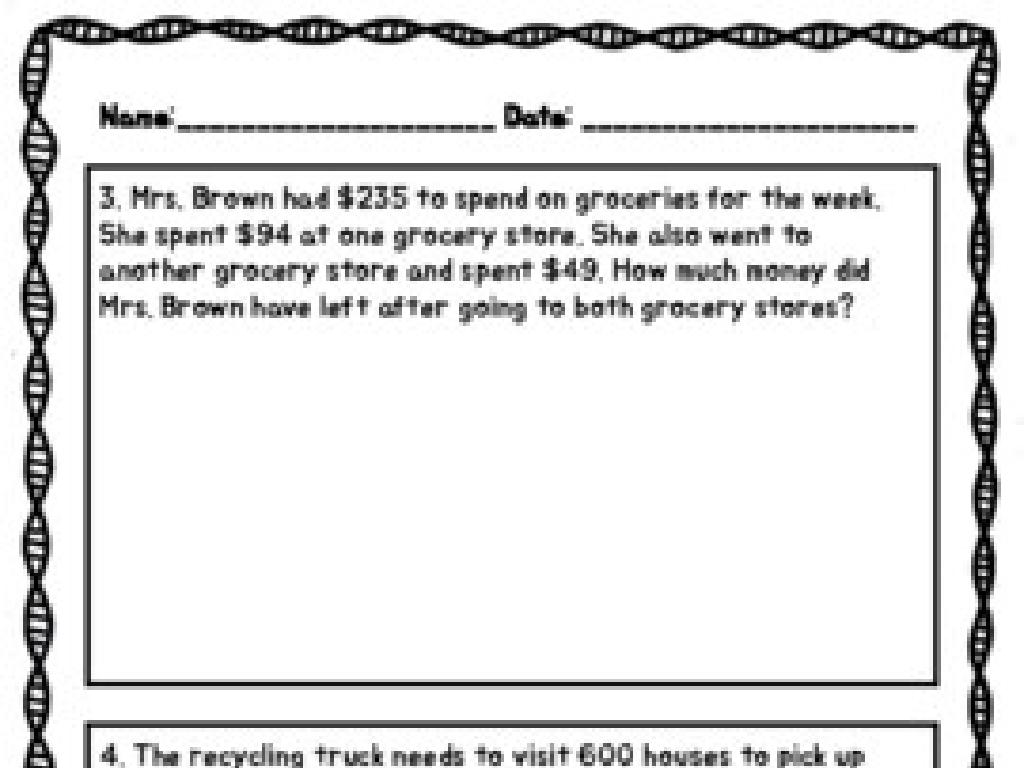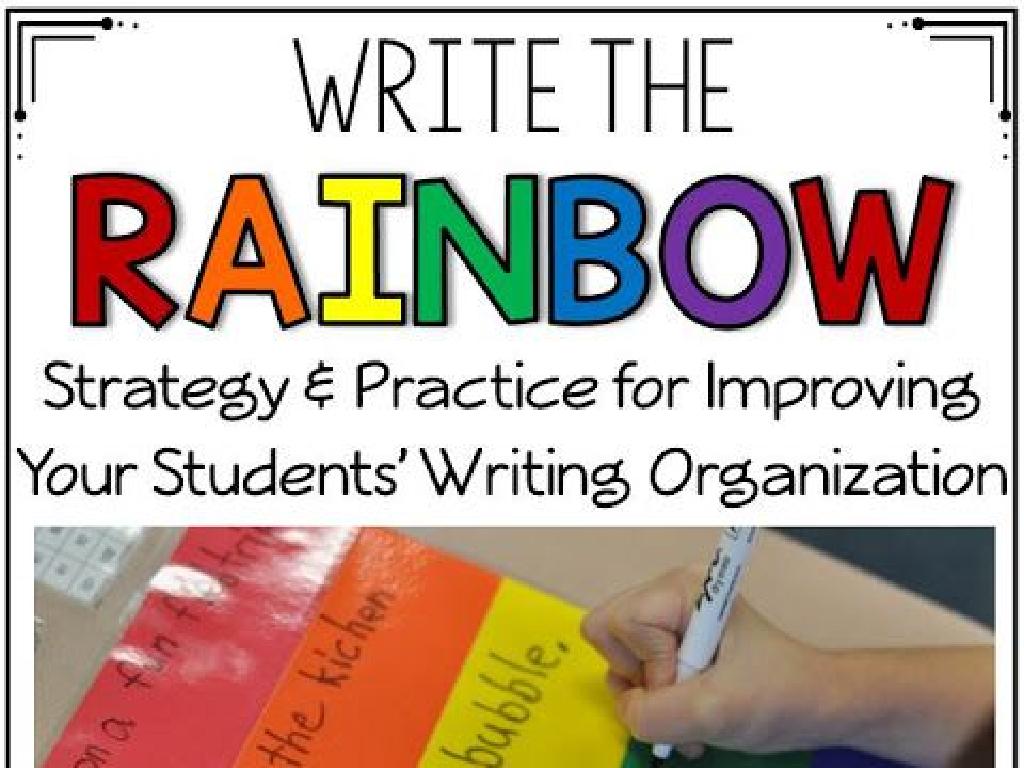Inequalities With Money
Subject: Math
Grade: Third grade
Topic: Money
Please LOG IN to download the presentation. Access is available to registered users only.
View More Content
Introduction to Money
– Learn about coins and bills
– Pennies, nickels, dimes, quarters, and bills have different values.
– Daily uses of money
– We use money to buy things like food, toys, and clothes.
– Review money values
– Recognize that a dime is worth 10 pennies, a quarter 25.
– Understanding money’s worth
– Knowing the value helps us make purchases and get change.
|
This slide introduces students to the concept of money, focusing on the physical forms of coins and bills. It’s crucial to help them recognize and understand the value of different denominations of money. Discuss everyday uses of money, such as buying groceries or saving for a toy, to make the concept relatable. A quick review of the values of common coins and bills will reinforce their ability to identify and use money effectively. Emphasize the importance of understanding money’s worth to make smart financial decisions, even at a young age. Activities can include coin recognition games, role-playing store scenarios, or using play money to simulate purchases.
Understanding Inequalities with Money
– Inequalities show differences
– Learn symbols: >, $3, or two toys: 2 $7
|
This slide introduces the concept of inequalities in the context of money, which is a relatable subject for third graders. Begin by explaining that inequalities are a way to compare different amounts of things, including money. Introduce the symbols for greater than, less than, and equal to, and ensure students understand how to interpret these symbols when comparing numbers. Use everyday examples, such as comparing prices of items or the number of coins in different jars, to illustrate these concepts. Finally, engage students with practical money scenarios where they can apply their understanding of inequalities to determine if they have enough money to make purchases or how much more they need to save. The goal is to make the abstract concept of inequalities tangible through the familiar context of money.
Inequalities with Money: Comparing Amounts
– Learn inequality symbols
– Compare $5 and $10
– Which amount is bigger, $5 or $10?
– Show $5 is less than $10
– Use ‘<' to show $5 is less than $10
– Practice with different amounts
– Try using symbols with other money amounts
|
This slide introduces students to the concept of comparing different amounts of money using inequality symbols. Start by explaining what inequality symbols are and how they are used to compare numbers. Use real-life examples, such as comparing money in two piggy banks, to make the concept relatable. Show that $5 is less than $10 by using the ‘<' symbol. Encourage students to practice with different amounts of money, reinforcing the concept that the symbol points to the smaller amount. Provide several examples and encourage students to come up with their own comparisons as well.
Let’s Practice Together: Comparing Money Amounts
– Pair up for a money comparison activity
– Use coins and bills to make amounts
– Create two different piles of money with your partner
– Write down your inequalities
– For example, if you have $3.50 and your partner has $2.75, write: $3.50 > $2.75
– Share your findings with the class
|
This class activity is designed to help students understand the concept of inequalities using real-life objects like coins and bills. Have the students pair up and provide them with a mix of coins and bills. Each pair should create two different amounts of money and then write down the inequality that represents their comparison. For instance, if one student has $1.25 and their partner has $1.00, they would write down $1.25 > $1.00. Encourage the pairs to discuss why one amount is greater than, less than, or equal to the other. After the activity, ask some pairs to share their inequalities and explain their reasoning to the class. This will help reinforce the concept and allow for peer learning. Prepare to offer guidance and ensure that each student is engaged and understands the activity.
Do You Have Enough Allowance to Buy a Toy?
– Understanding money inequalities
– Scenario: Buying a toy with allowance
– If a toy is $7 and you have $10, can you buy it?
– Writing the inequality for a toy purchase
– $10 you have e $7 cost of the toy shows you have enough
– Comparing your allowance and toy cost
– Use ‘greater than’ or ‘less than’ to compare money
|
This slide introduces students to the concept of inequalities with money through a relatable scenario of buying a toy with their allowance. It’s important to explain that inequalities help us compare different amounts of money to make decisions. For example, if a toy costs $7 and a child has $10, they can use an inequality to show that they have enough money. The inequality $10 e $7 demonstrates that the child’s allowance is greater than or equal to the cost of the toy, meaning they can afford it. Encourage students to think of similar situations where they had to compare amounts of money and decide if they had enough to make a purchase. This real-life application helps solidify the concept of inequalities in a context they understand.
Inequality Symbols Game
– Match money amounts with symbols
– Use , or = to show which amount is larger
– Work in groups for more inequalities
– Collaborate to solve and learn together
– Share your findings with the class
– Discuss what you learned as a group
|
This interactive game is designed to help students understand and apply inequality symbols (, =) in the context of money. Divide the class into small groups and provide them with sets of cards depicting different amounts of money and inequality symbols. The goal is for students to match the amounts with the correct symbol, forming true statements (e.g., $5 > $3). Encourage teamwork and critical thinking as they discuss and decide on the inequalities. After the activity, have each group share their findings, reinforcing the concept and allowing for peer learning. Possible variations of the activity could include using real coins and bills, creating a competition to see which group finds the most correct inequalities, or integrating technology by using a digital matching game.
Class Activity: Inequality Shopping Spree
– ‘Buy’ items with play money
– Compare your money to item prices
– Do you have more, less, or just enough?
– Write inequalities for purchases
– Use symbols: >, <, or = in your inequalities
– Discuss findings with the class
|
This activity is designed to help students understand the concept of inequalities in a fun and interactive way. Set up the classroom with various items labeled with price tags. Provide students with play money and let them ‘purchase’ items. They should then decide if the amount of money they have is greater than, less than, or equal to the item’s price. Students will write down the inequality for each transaction. For example, if an item costs $5 and they have $7, they write ‘7 > 5’. After the activity, have a discussion where students share their inequalities and explain their reasoning. This will reinforce their understanding of inequalities and money management. Possible variations of the activity could include offering discounts, setting budgets, or trading items to introduce more complex scenarios.
Wrapping Up: Money and Inequalities
– Review: Why money knowledge matters
– Daily life applications
– Comparing prices, budgeting, and making smart choices
– Next class: Saving vs. Spending
– Understanding how to manage money effectively
– Reflect on today’s lessons
|
As we conclude today’s lesson on inequalities with money, it’s crucial to reinforce the importance of understanding money concepts. This knowledge helps students make informed decisions when comparing prices, budgeting for items they need or want, and choosing how to spend their money wisely. Emphasize real-life scenarios where they might use these skills, such as deciding between different toys within their allowance limit. Looking ahead, prepare the students for the next class, which will delve into saving and spending. Encourage them to think about questions or topics they’d like to explore related to money management. Reflect on the key takeaways from today and ask students to share what they’ve learned about money inequalities.





